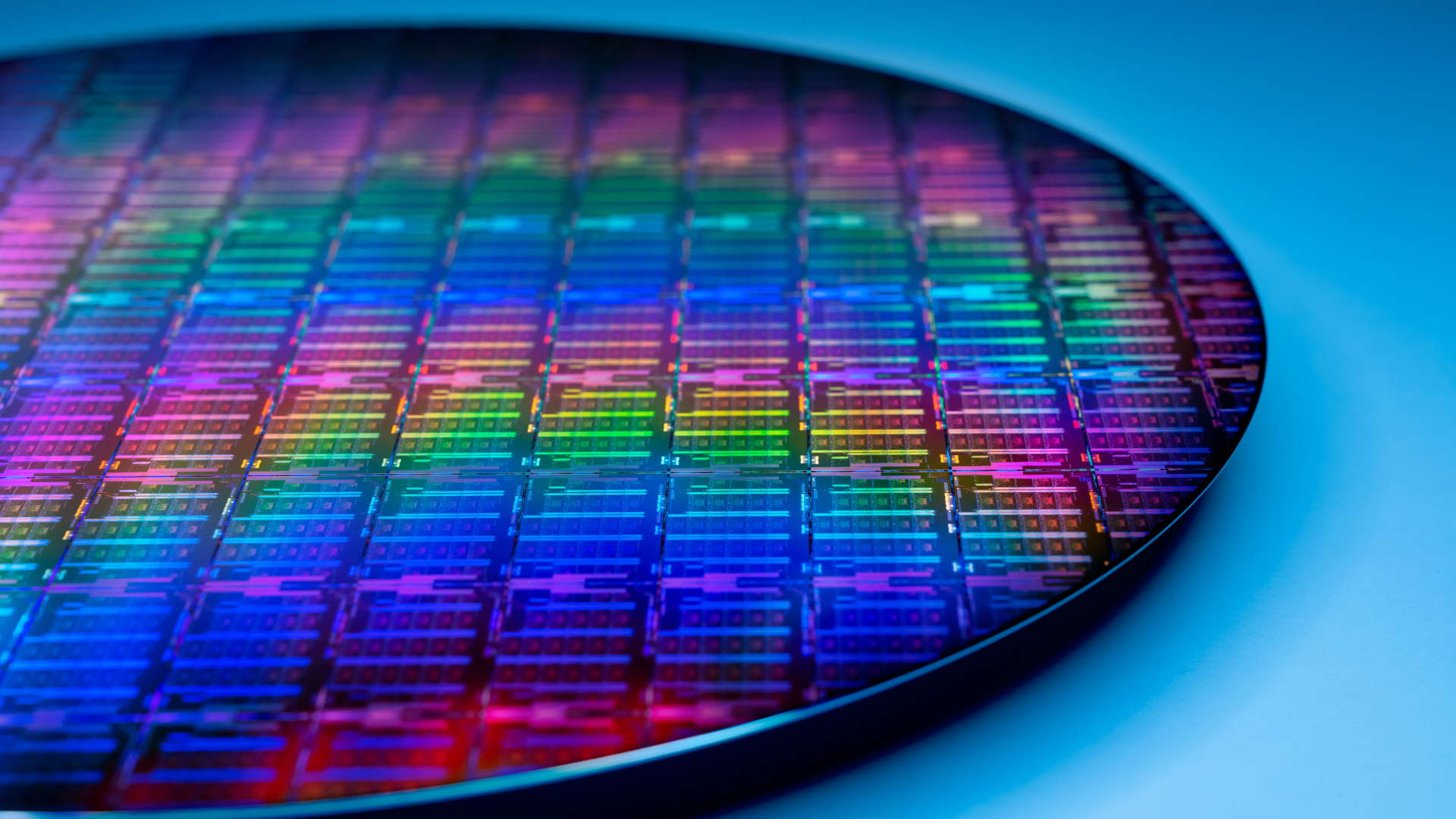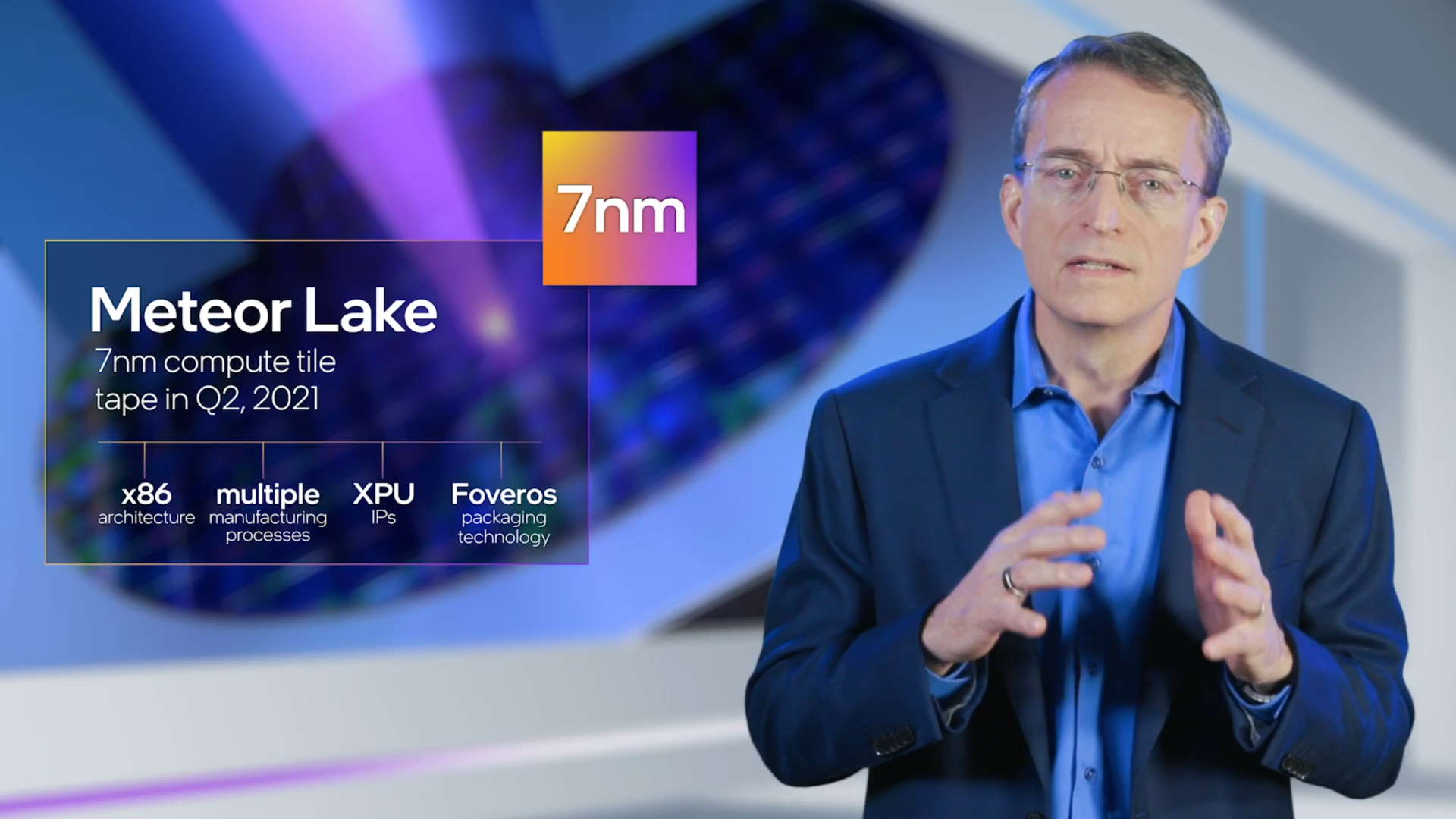Meteor Lake, Intel's first 7nm CPU, to tape in before July this year and release in 2023
At the Intel Unleashed: Engineering the Future livestream Intel has taken the wraps off its 3D version of Alder Lake.

Intel's new CEO, Pat Gelsinger, has just given us a glimpse of the new Meteor Lake processors, with a prospective launch in 2023... now that the 7nm production process has been fixed. Talking with passion about the potential within Intel's manufacturing and design capabilities, as well as announcing a whole new wing of the business with the creation of Intel Foundry Services, Gelsinger reiterated his belief that its best years are ahead of it.
Launching in 2023, Intel Meteor Lake will be a next-gen follow up to the Alder Lake chips launching this year. Like Alder Lake we're expecting a mixed core design, with both 7nm Ocean Cove and 10nm Gracemont sitting on the same package, but Meteor Lake is likely the first desktop processor to use the Foveros packaging technology to stack tiles on top of each other.

Gelsinger claims that this is Intel's competitive advantage going forward, where the tiles can work far better than the chiplets AMD is using to great effect in its Ryzen CPUs. Instead of having to go between chiplets the use of stacked tiles allows each individual component to act as though it's on a single chip.
Those tiles will include a GPU tile and probably a dedicated AI tile too, as we're promised Meteor Lake will include what Intel is calling XPU IPs.
Meteor Lake hitting the 'tape in' phase before the summer this year indicates how far down the road it is with its first 7nm client processor. This phase is where the different parts of the final chip are brought together for the first time in one package ahead of a final 'tape out' design just before manufacturing.
We're still expecting a 10nm Alder Lake refresh in 2022, ahead of Meteor Lake, code named Raptor Lake. And then Meteor Lake will be followed by a similarly 7nm Lunar Lake family of chips, with Intel aiming for a yearly cadence and to re-establish the tick-tock strategy.
The announcement came at tonight's Intel Unleashed: Engineering the Future livestream where Gelsinger also announced a radical change to its business creating a standalone foundry model alongside its own internal manufacturing. With the launch of Intel Foundry Services it's looking to rival the 80 percent of chip creation coming out of Asia, to secure capacity around the globe.
The biggest gaming news, reviews and hardware deals
Keep up to date with the most important stories and the best deals, as picked by the PC Gamer team.
As Gelsinger says, "the world needs more semiconductors," and Intel is looking to help provide the capacity to ensure that chip supply remains strong from a global standpoint.
Xe HPG microarchitecture teaser = 🍬👀 pic.twitter.com/kdzBokBiW4March 18, 2021
What we didn't hear any more about—despite Twitter teasers last week, and an Xe HPG Scavenger Hunt kicking off on Friday March 26—were Intel's new graphics cards being promised for the end of the year.
As well as potentially providing a way out of the chip supply problems in the future (far in the future as it takes a while to build up a contract manufacturing arm and build a couple new $20bn fabs in Arizona), the new Xe HPG graphics cards could offer a way out of the GPU crisis. And it might be able to do it this year.

Best CPU for gaming: the top chips from Intel and AMD
Best graphics card: your perfect pixel-pusher awaits
Best SSD for gaming: get into the game ahead of the rest
However, Intel's first discrete gaming cards aren't going to be made in-house, and will be manufactured by TSMC on its own 7nm node. In fact Gelsinger promised it would be looking to increase the amount it uses external foundries throughout its business despite ostensibly setting up a rival contract foundry business of its own.
Gelsinger looks to be going back to Intel's roots, and indeed claimed that "the old Intel is the new Intel" as he signed off the livestream. By doubling down on its manufacturing strengths and engineering background, and a commitment to execute on its roadmap, Intel looks to be on a strong path going forward.
Though it may well take a while to get there yet.

Dave has been gaming since the days of Zaxxon and Lady Bug on the Colecovision, and code books for the Commodore Vic 20 (Death Race 2000!). He built his first gaming PC at the tender age of 16, and finally finished bug-fixing the Cyrix-based system around a year later. When he dropped it out of the window. He first started writing for Official PlayStation Magazine and Xbox World many decades ago, then moved onto PC Format full-time, then PC Gamer, TechRadar, and T3 among others. Now he's back, writing about the nightmarish graphics card market, CPUs with more cores than sense, gaming laptops hotter than the sun, and SSDs more capacious than a Cybertruck.

